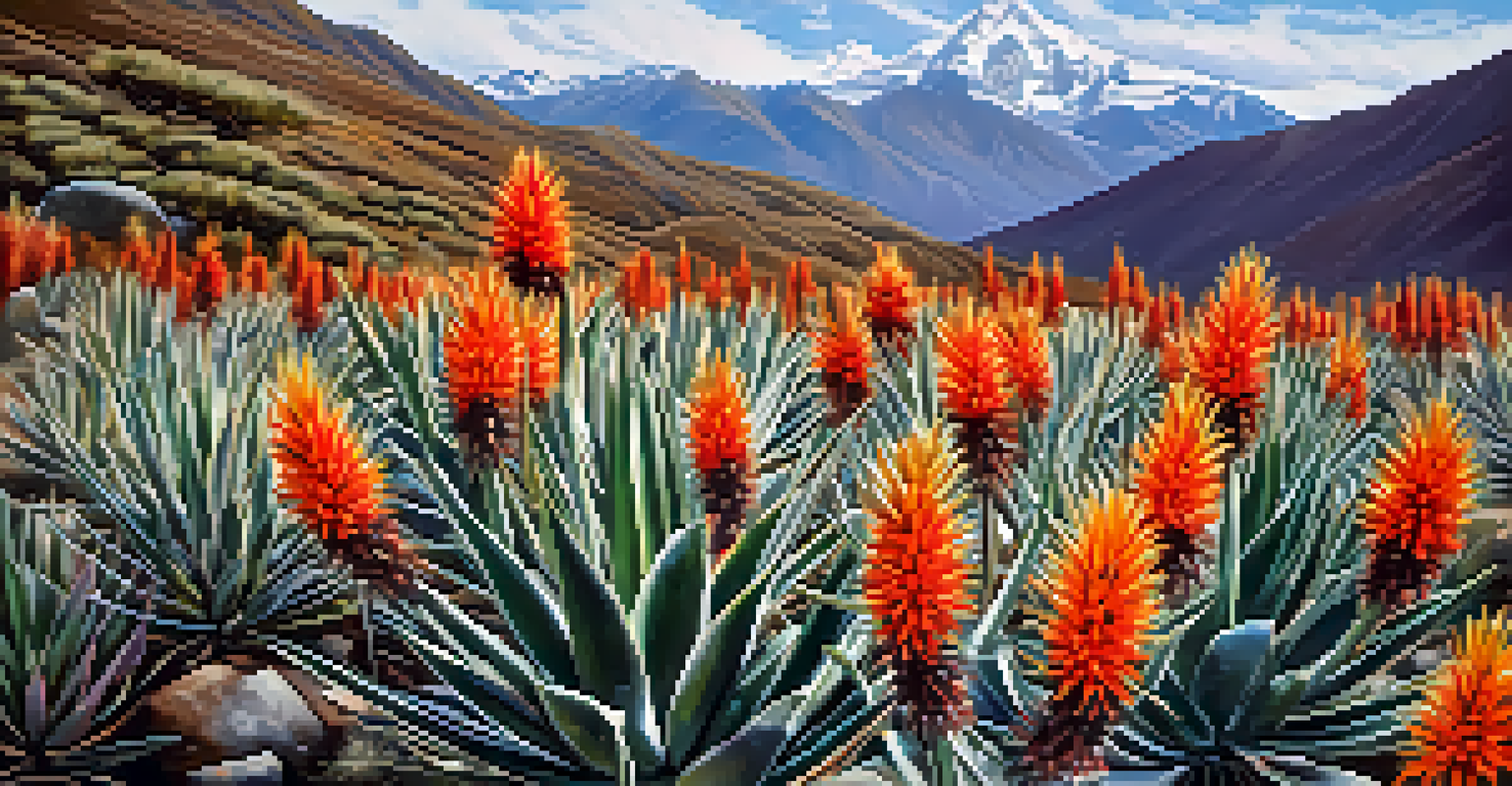The Majestic Andes: Discovering Peru's Mountain Landscapes

Introduction to the Andes: A Natural Wonder
The Andes Mountains stretch over 4,300 miles along the western coast of South America, making them the longest mountain range in the world. In Peru, these mountains are not just a geographical feature; they are a vital part of the country's identity and history. From vibrant cultures to rich biodiversity, the Andes offer a unique blend of natural beauty and cultural significance.
The mountains are calling and I must go.
Traveling through the Andes, you'll encounter stunning landscapes, from snow-capped peaks to lush valleys filled with unique flora and fauna. The mountains are home to numerous ecosystems, making them a paradise for nature lovers and adventure seekers alike. Whether hiking, climbing, or simply taking in the views, the Andes provide a backdrop that captivates every visitor.
As we embark on this journey through Peru's majestic Andes, we'll explore the breathtaking scenery, the rich culture of the indigenous people, and the adventures that await those who venture into these towering heights.
The Unique Ecosystems of the Andes
The Andes are renowned for their diverse ecosystems, ranging from high-altitude deserts to tropical rainforests. This incredible variety is largely due to the varying altitudes and climates found within the mountain range. As you ascend, you’ll notice a drastic shift in vegetation and wildlife, making each level of the mountain a new adventure.

For example, the Puna region, located above 12,000 feet, features vast grasslands and is home to unique wildlife such as the vicuña, a relative of the llama. Meanwhile, lower elevations boast lush cloud forests filled with orchids, bromeliads, and a myriad of colorful birds. This biodiversity is not just beautiful; it’s crucial for the health of the planet.
Andes: A Blend of Nature and Culture
The Andes are not only the longest mountain range but also a vital part of Peru's identity, showcasing stunning landscapes and rich cultural heritage.
Exploring these ecosystems allows you to witness firsthand how life adapts to extreme conditions. Each hike or trek becomes a lesson in ecology, showcasing the resilience of nature in this breathtaking environment.
Cultural Heritage: The Heart of the Andes
The Andes are not just a natural marvel; they are also a cradle of ancient civilizations. The Inca Empire, one of the most advanced cultures in pre-Columbian America, thrived in these mountains and left behind a rich legacy that continues to influence modern Peruvian culture. Sites like Machu Picchu, a UNESCO World Heritage Site, attract travelers eager to connect with this vibrant history.
In every walk with nature, one receives far more than he seeks.
Indigenous communities still inhabit the Andes, preserving their traditions, languages, and lifestyles. From colorful textiles to traditional music and dance, the cultural expressions of these groups are deeply intertwined with the land. Participating in local festivals or visiting artisan markets offers a glimpse into the soul of the Andes.
Understanding this cultural heritage enriches your experience in the mountains, allowing you to appreciate not only the stunning scenery but also the stories and traditions that have shaped this region for centuries.
Adventure Awaits: Activities in the Andes
The Andes are a playground for outdoor enthusiasts, offering a variety of activities that cater to all levels of experience. Hiking is perhaps the most popular way to explore the mountains, with trails like the Inca Trail attracting trekkers from around the globe. Whether you're looking for a challenging multi-day trek or a leisurely day hike, the Andes have something for everyone.
In addition to hiking, the Andes are perfect for rock climbing, mountain biking, and even paragliding. Imagine soaring through the skies, taking in panoramic views of the majestic peaks below. Each activity provides a unique perspective of the mountains, making your adventure even more memorable.
Diverse Ecosystems Await Exploration
The Andes host a wide range of ecosystems, from high-altitude deserts to tropical rainforests, each offering unique biodiversity and adventure opportunities.
For those seeking a more relaxed experience, consider soaking in one of the natural hot springs found throughout the region. After a day of exploring, there's nothing quite like unwinding in warm waters while surrounded by breathtaking landscapes.
Flora and Fauna: The Rich Biodiversity of the Andes
Home to an incredible array of plant and animal life, the Andes are a biodiversity hotspot. From the iconic Andean condor soaring high above to the vibrant quetzal bird hiding among the trees, the mountains are alive with unique species. Each ecosystem harbors its own set of flora and fauna, contributing to the rich tapestry of life found here.
In the high-altitude regions, you might encounter hardy plants like the quinoa and the unique Puya raimondii, known for its towering flower stalks. In contrast, the cloud forests are teeming with life, including countless species of orchids and endemic wildlife. This contrast makes the Andes a fascinating place for scientists and nature lovers alike.
Conserving this biodiversity is essential for maintaining the health of the planet. Many local organizations work to protect these ecosystems, highlighting the importance of sustainable tourism and responsible exploration.
Sustainable Tourism: Protecting the Andes
As interest in the Andes grows, so does the need for sustainable tourism practices. The delicate ecosystems and rich cultural heritage of this region require careful management to ensure that future generations can enjoy their beauty. Sustainable tourism not only helps preserve the environment but also supports local communities.
By choosing eco-friendly tours, staying in locally-owned accommodations, and respecting cultural traditions, travelers can minimize their impact on the mountains. Engaging in responsible tourism practices ensures that the natural and cultural treasures of the Andes remain intact for years to come.
Embracing Sustainable Tourism
Sustainable tourism practices are essential for preserving the Andes' delicate ecosystems and cultural heritage while supporting local communities.
With the right approach, visitors can experience the magic of the Andes while contributing to their preservation. It's a win-win situation that allows you to enjoy everything this stunning region has to offer while making a positive difference.
Conclusion: The Legacy of the Andes
The Andes are more than just mountains; they are a testament to the resilience of nature and the richness of human culture. From the breathtaking landscapes to the vibrant traditions of the people who call this region home, the Andes leave a lasting impression on all who visit. Each journey through these majestic peaks is an opportunity to connect with history, nature, and oneself.
As you plan your adventure in Peru's Andes, remember to take the time to appreciate the beauty around you. Whether you're trekking through the mountains or soaking in the local culture, allow yourself to be fully present in the moment. These experiences are what make the journey truly unforgettable.

Ultimately, the Andes inspire us to cherish our planet and the diverse cultures that inhabit it. They remind us of the importance of preserving our natural wonders for future generations to explore and enjoy.